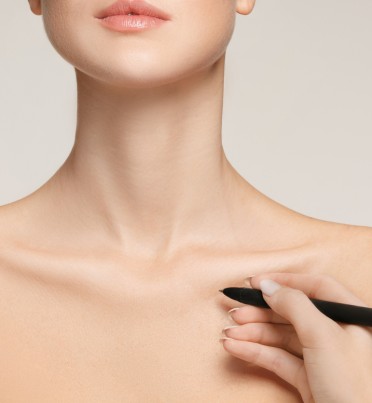Procedures
Body

Indications
There are various reasons as to why a woman may want a Breast Augmentation surgery.
- Ageing: As a woman ages, the breasts tend to lose their firmness. This leads to loss of skin elasticity and tone and the breasts start to look sagging and droopy.
- Pregnancy and lactation: Pregnancy brings about tremendous changes in the bodies of women. Following Breastfeeding, as the breasts involute, they tend to lose their volume and size and look empty and saggy.
- Heredity: Heredity also plays a major role in determining the size of the breasts.
- Hypomastia:Hypomastia is a congenital condition that results in underdeveloped and smaller breasts after puberty.
- Asymmetrical breasts: Sometimes the size of the two breasts can be different with one bigger than the other. Breast augmentation can ensure proportionate and symmetrical breasts.
- Improving aesthetic appearance:Breast augmentation can be also done in order to beautify the body further as desired by the woman to improve the overall aesthetic appearance.

What does the procedure achieve?
Attractive youthful breasts are desired by all women. They make a woman look feminine, sensuous and graceful. However, some women do not have adequate breast development after puberty and therefore have a flat chest or very small breasts which are disproportionate with the rest of their body. This may sometimes affect the woman psychologically as the pressure of being physically perfect builds up.
This can be corrected by Breast Augmentation surgery also known as breast enhancement, breast enlargement or even colloquially as boob job etc.
CONTRAINDICATIONS
Any patient over the age of 18 years who is physically and mentally healthy can undergo breast augmentation.

Consultation
Patients and the parents of young children should get their doubts explained during the face to face consultation with their plastic surgeon. They can ask about alternative treatments and possible risks or side-effects of the planned procedure.Usually your plastic surgeon will show you pictures of similar cases that he/she has performed and the outcome.Patients should disclose any history of previous surgeries to the doctor.
Your plastic surgeon will then
- Evaluate your general health status and any pre-existing health conditions or risk factors
- Take photographs
- Discuss your ear surgery options and recommend a course of treatment
- Discuss likely outcomes of your ear surgery and any risks or potential complications
Anaesthesia
Breast augmentation is generally performed under general anaesthesia.
Time For Procedure
The surgery generally takes about 2 hours.Complications
- Problems associated with breast augmentation are quite rare. Some of these include:
- Bleeding after surgery and Clot collection
- Chances of infection
- Seroma (Fluid collection around the implant)
- Thickening of Scar
- Temporary numbness around the areola
- Rupturing or leakage of implants (saline implants only)
- Capsular contracture – leading to hardening of breasts
- ALCL (Anaplastic Large Cell Lymphoma)(specific to textured implant)
Utmost care is taken by your qualified Aesthetic Surgeon at all times during the recovery process to reduce these risks.
FAQs
Breast augmentation is done either through the use of implants or by fat grafting.
Implants are generally of two types: silicone gel implants and saline implants.
- Silicone Gel Implants: Silicone gel implants are used in breast augmentation surgeries all over the world. These implants are further divided into round and anatomical (tear-drop) shapes and are available in varied sizes. The gel used in these implants is cohesive or highly cohesive (gummy bear) which makes them safe and matches the feel of natural breast tissues. These implants do not rupture and cannot leak silicone even on tearing because of the cohesive nature of the gel.
- Saline Implants: Saline implants are made of a silicone shell which is then filled with sterile saline. They can be either pre-filled or filled after inserting them into the breasts
In the case of fat grafting, fat extracted from one’s own body by liposuction is processed and selected and then good quality fat is used to inject into the breasts. As no foreign material is introduced into the body, the chances of rejection are zero. However, because the fat needs to acquire blood supply to survive in the recipient area (breasts), there is a 20-40% absorption rate. So the size that can be achieved with one session is usually smaller than the size possible to be achieved through implants and it may require 2-3 sessions to achieve a desirable size.






